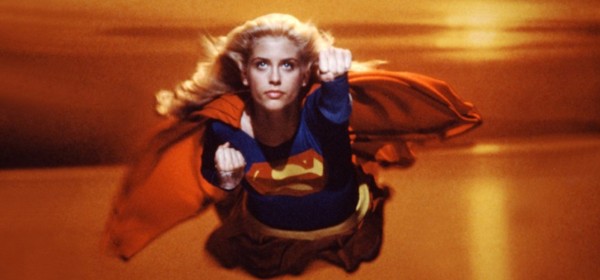
Supergirl. Barb Wire. Elektra. Catwoman.
These four distinct super heroines are all strong-willed, powerful and determined role models from the world of comics. They all, however, share a specific critical legacy: each have been the stars of eponymous films that have crashed commercially, critically and financially. Without exception.
When you consider the rich history of female superheroes in comics, it seems odd that Hollywood can’t repeat the recipe for success that has consistently brought Batman, Spider-man and Superman back to the big screen? More importantly, why are the female superhero roles being pushed to the margins or crucially underdeveloped to the point of complete vapidity? When answering this it is necessary to consider the origins [no X-Men included], and go back to a comic released in December, 1941.
The comic in question, All Star Comics No.8, featured Wonder Woman’s debut. Created by Dr. William M. Marsden and H.G. Peters, Wonder Woman was the superhero reflection of the new, liberated woman of the era. She was as powerful and resourceful as any man, and boasted all the strength of Superman and the guile and gadgets of Batman. She was an instant success, attracting both female and male readers, and her continuing presence at the forefront of the D.C. Universe to this day illustrates her undeniable popularity and legacy; a legacy that has influenced female heroes such as Supergirl, Elektra, Storm, Jean Grey and Kitty Pryde, to name just a few.
These complex characters still draw readers in, so why in film are they presented as dull shadows compared to their vivid print selves? I believe the answer lies in understanding three essential factors that leave the female heroes lost in translation: internalisation, objectification and the brutality of the bottom line.
The key creative element that defines the uniqueness of the comic book medium, and is arguably the hardest element to translate from page to screen, is the internal connection between character and reader. The serialised nature of comics reinforce a sense of familiarity and a longer lasting connection is built as the internal thoughts of the characters are week on week laid bare through the use of speech bubbles. Furthermore, the characters evolve, repeatedly breaking down into more complex beings and the continuity created here draws the reader ever-closer. Without these aspects, films are often left only adapting the visual excesses and the larger-than-life style.
This foregrounding of visual excess of comics has led directly to the second factor, the objectification of female superheroes, which feeds into the much wider, and much talked about, issue of the portrayal of women in mainstream cinema itself. It is not to say that the comics haven’t also presented female heroes as sexual objects (Much of Wonder Woman’s success with male readers in her early years was tied into the overt images of female bondage and female domination that marked the character’s adventures), but where the comics have crafted a complete character, defined by the internalisation and connection to the reader, some female characters in superhero films are entirely without depth; serving merely as objects of scopophilic pleasure. The casting of January Jones as Emma Frost in X-Men First Class and the casting and subsequent marketing of both Pamela Anderson as Barb Wire in Barb Wire, and Scarlet Johansson as Black Widow in Iron Man 2 [and this summer’s The Avengers] are perhaps the best examples of this.
This objectification directly affects the most important factor of all: the bottom line. The Superhero genre has developed into Hollywood’s own golden goose, consistently bringing gigantic box office numbers and merchandise sales. However, the female fronted superhero films have a bad track record, dating back to 1984’s Supergirl, which grossed only $14,269,438 worldwide (In comparison, the first Superman took in $300,218,018 worldwide).
Arguably, Supergirl’s commercial failure doomed all super-heroines to follow as it put a black mark against the female hero vehicle. The film itself contains a campy, confused sensibility that can also be seen to run through the later Catwoman and Barb Wire. As a result, Hollywood has been reluctant to fund and explore this risky sub-genre. When it rarely has, the studios have simply not backed the films with the same marketing presence, a problem that plagued Catwoman and even saw it being dropped from an original IMAX release due to the risk of expense. Worst of all, this has led to smaller budgets, that have in turn led to soft, compromised handling of the material which leaves these pictures with a fatal identity crisis.
So is there any hope for the female super hero film vehicle? For many, all hope lies in the first heroine in her own right, Wonder Woman. As a compelling character and a commercially viable franchise hero, she may be the best bet to break this trend of woe…however, I believe it can only happen if the culture around the adaptation of these female figures changes: if these characters are given as much respect and space to grow and relate with the audience as the super men who have carved out their own little niche in the film biz.















{ 1 comment… read it below or add one }
Red Sonja. Her film did not crash. She was an amazing heroine.